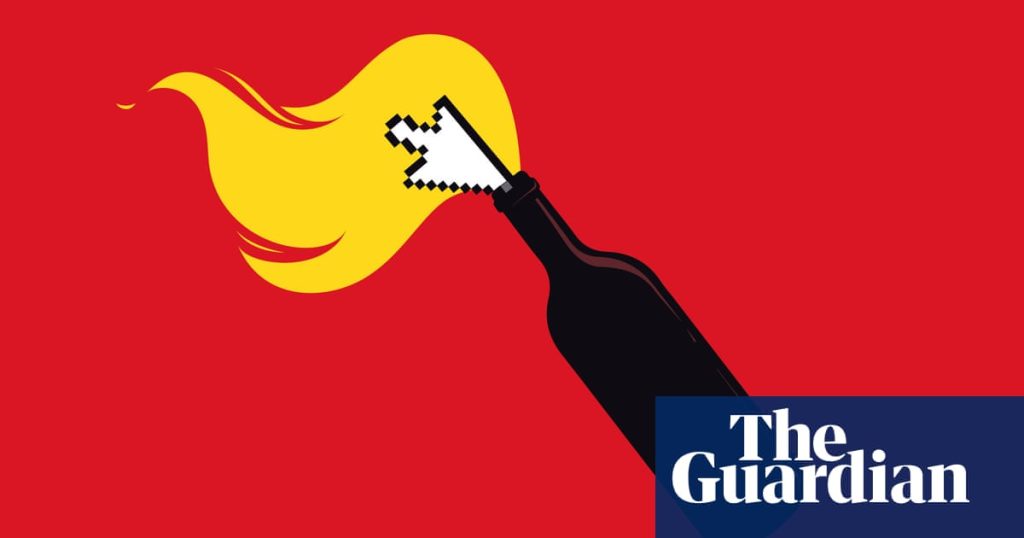The Illusion of Online Outrage: How a Vocal Minority Distorts Our Perception of Reality
The digital age has ushered in an era of unprecedented interconnectedness, but it has also fostered a pervasive sense of negativity and division. Scrolling through social media often leaves users feeling demoralized, bombarded with outrage and animosity. Yet, this online world often starkly contrasts with everyday experiences, creating a jarring disconnect between virtual and real-life interactions. This discrepancy stems from the disproportionate influence of a small but highly active group of users who dominate online discourse, shaping our perception of society and amplifying extreme viewpoints.
Research reveals that social media platforms function as funhouse mirrors, distorting the image of society by amplifying the loudest and most extreme voices while silencing the moderate and nuanced perspectives. This distortion is largely driven by a handful of hyperactive users who generate a disproportionate amount of content, particularly on politically charged topics. On platforms like X (formerly Twitter), a tiny fraction of users produces the vast majority of political content, often disseminating misinformation to millions of followers. This pattern replicates across the internet, where a small percentage of users engage in toxic behavior, flooding platforms with hostile and misleading content.
The dominance of these super-users shapes our collective impression of online spaces, leading us to believe that society is far more polarized and angry than it truly is. This skewed perception is further fueled by algorithms designed to maximize engagement, prioritizing surprising and divisive content that reinforces existing biases. The constant exposure to extreme views cultivates pluralistic ignorance, a phenomenon where individuals misperceive the beliefs and behaviors of others. This misperception can have significant consequences, leading to increased polarization and a breakdown of constructive dialogue.
The problem isn’t solely the individual extremists, but also the design of social media platforms and their algorithms. These algorithms, optimized for engagement, inadvertently promote the most outrageous voices, creating a feedback loop that amplifies extreme content. This creates an environment where even individuals who aren’t inherently extreme may adopt more radical stances online to gain attention and approval, further contributing to the distorted reality presented on social media. As a result, the voices of the silent majority are drowned out, creating a vacuum filled by the loudest and often most inflammatory voices.
This distortion has far-reaching implications, affecting how we perceive and interact with others. The constant barrage of negativity can lead to increased anxiety, depression, and a distorted sense of social norms. It fosters a climate of distrust and division, making it difficult to find common ground or engage in productive conversations. This skewed perspective can impact real-world decisions, from voting choices to personal relationships, further exacerbating societal divides.
However, this toxic dynamic is not inevitable. The first step towards mitigating its impact is recognizing the illusion and understanding that a silent majority often exists behind the veil of online outrage. As users, we can reclaim some control by curating our feeds, resisting the allure of outrage bait, and actively promoting nuanced and constructive dialogue. We can choose to follow a healthier information diet, prioritizing sources that offer balanced perspectives and fostering a more representative online environment.
Furthermore, social media platforms have a responsibility to redesign their algorithms to prioritize representative content and de-emphasize extreme voices. This shift would create a more balanced online ecosystem, enabling diverse perspectives to be heard and fostering more constructive engagement. By prioritizing user well-being and promoting informed discourse, platforms can play a crucial role in combating the spread of misinformation and promoting a healthier online experience for all.
Breaking free from the echo chamber of online outrage requires a collective effort. By recognizing the distorting effects of social media, actively curating our online experiences, and advocating for platform accountability, we can reclaim the internet as a tool for connection, understanding, and positive social change. The goal is not to silence dissenting voices but to create a more balanced and representative online environment where diverse perspectives can be heard and constructive dialogue can flourish.


